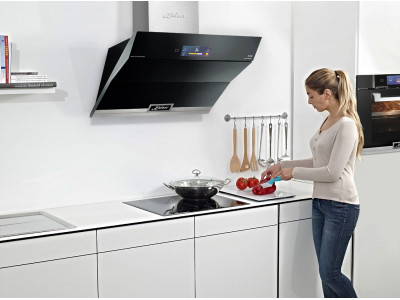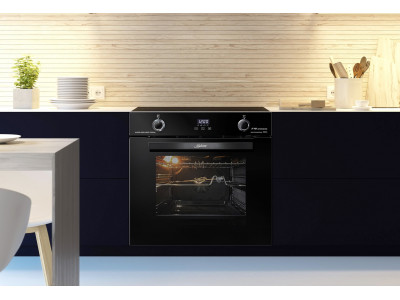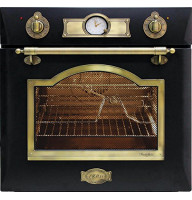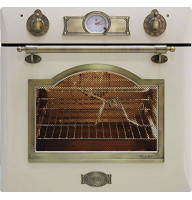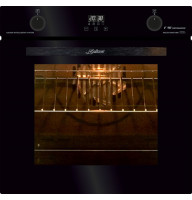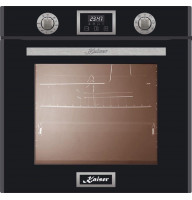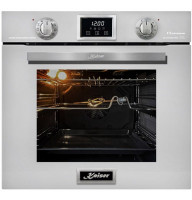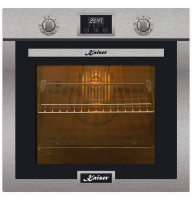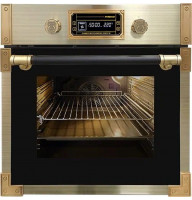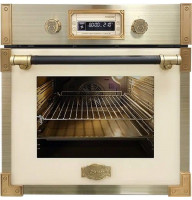CHF 0.00
CheckoutWhat to look for in a new oven?

Which kitchen appliance model is right for you? And what operating modes, cleaning systems, or comfort functions are available? What should a modern oven be capable of today? And what should you pay attention to when purchasing a kitchen appliance? We'll reveal all of this so that you are well-prepared for buying your new kitchen appliances.
WHAT TYPES OF OVENS ARE THERE?
When choosing an oven, there are many aspects to consider to ensure that it meets your needs and cooking style. Here are some points that can help you select the right model for you

Operating Modes and Functions
Modern ovens offer a variety of operating modes and functions that can enhance your cooking experience. Here are some common functions:
- Hot air circulation/Forced convection: Even heat distribution in the oven for uniform baking or roasting.
- Grill function: For grilling meat, fish, or vegetables.
- Pizza mode: A special function for crispy pizzas.
- Top and bottom heating: For traditional baking and roasting.
- Steam function: For gentle cooking of vegetables, fish, or rice.
- Self-cleaning functions: Pyrolysis (high-temperature automatic cleaning) or catalytic coatings (self-cleaning walls).
- Rapid heating: To quickly reach the desired temperature.
- Programs for special dishes: Pre-set programs for various dishes.
Brands vs. No-Name Products
The choice between branded and no-name products depends on your budget and needs. Brand-name products often offer better quality, reliability, and good customer service. They usually also have a wider range of features. No-name products can be a more economical option if you don't need certain functions and have a limited budget. It's advisable to read reviews and ratings to get a better understanding of the quality and performance of a no-name product.
Considerations during purchase:
- Size and installation type: Ensure that the oven fits your kitchen and has the correct installation type (built-in oven or freestanding oven).
- Energy efficiency: Pay attention to the energy efficiency class to reduce energy costs.
- Usage and control: Choose an intuitive control system for you. A clear display and easy-to-understand commands can make usage simpler.
- Cleaning: Self-cleaning functions can simplify cleaning.
- Functions: Evaluate which functions are important for your cooking needs.
- Accessories: Pay attention to included accessories like baking trays and grates.
- Warranty and customer service: Solid warranty and good customer service are important for long-term use.
- Value for money: Compare features and price to find the best deal.
BASIC EQUIPMENT IN OVENS
Ovens and ranges have a variety of heating modes and functions and differ in shape and internal capacity. But what basic equipment should an oven or range have at least to not spoil the fun of cooking?
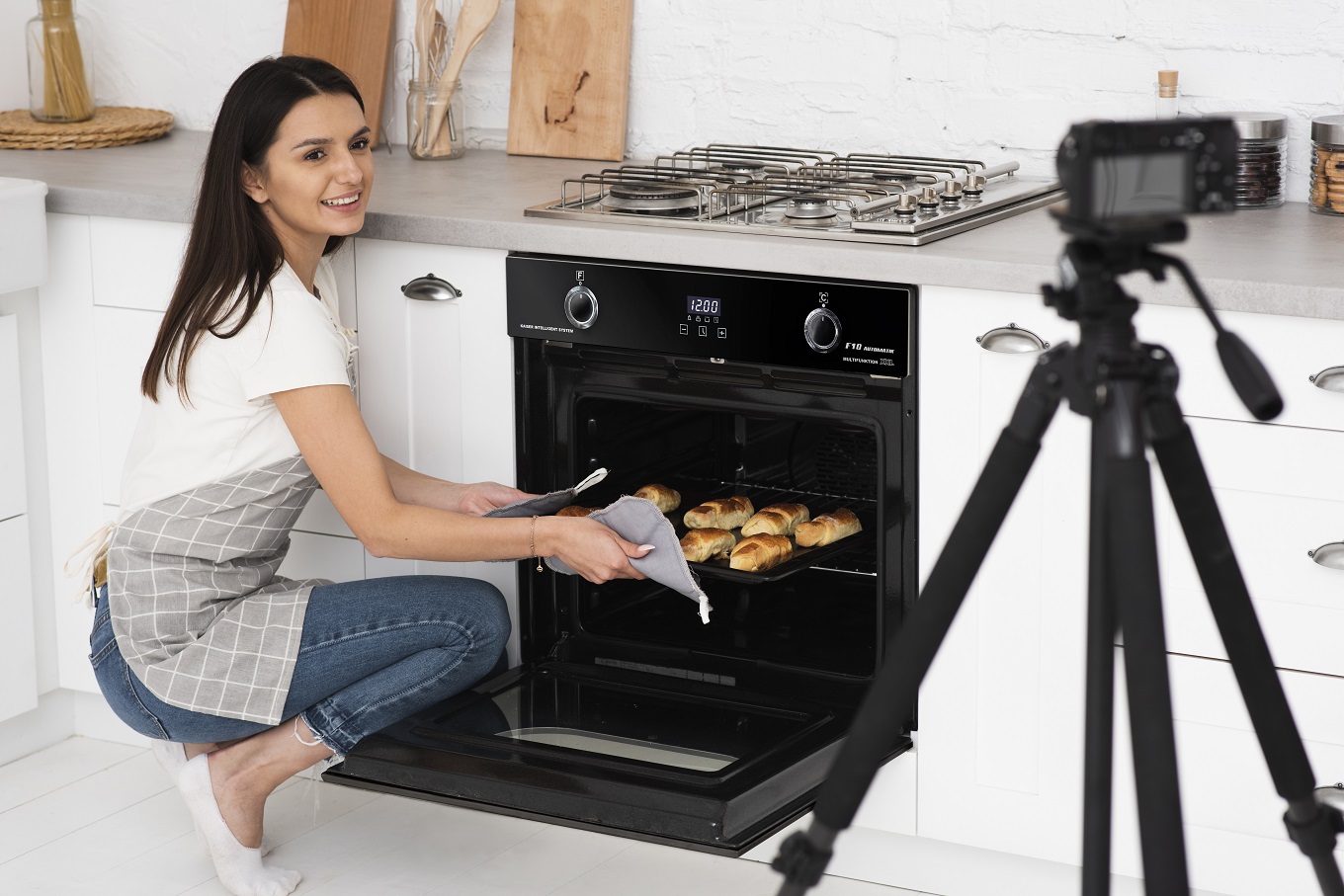
The basic equipment of an oven or range is important for being able to perform a variety of cooking and preparation tasks efficiently. Here are some essential functions and equipment items that an oven or range should have at least to not spoil the pleasure of cooking:
1. Top and bottom heating:
The basic heating method for baking and roasting food. Allows you to bake cakes, bread, gratin, meat, and more.
2. Hot air circulation/Forced convection:
An important function that ensures even heat distribution in the cooking chamber. With ventilated heat, you can cook multiple dishes at once without mixing flavors.
3. Grill function:
The grill function allows you to brown and grill foods from the top. Ideal for achieving crispy surfaces in dishes like steaks, fish, and baked dishes.
4. Interior lighting:
Well-placed interior lighting allows you to monitor the cooking progress without having to open the door.
5. Timer function:
A timer is essential for accurately adhering to cooking times. Some ovens also offer an automatic shutdown function when the set time has elapsed.
6. Temperature control:
The ability to precisely set the desired temperature is essential for various recipes and cooking methods.
7. Baking tray and grill rack:
One or more baking trays and grill racks should be part of the basic equipment for cooking various types of food.
8. Easy cleaning:
Some basic features can make cleaning easier, such as removable baking trays and catalytic coatings that absorb grease and dirt.
9. Child safety:
If there are children in the house, a child safety function can prevent the oven from being accidentally turned on.
10. Energy savings:
An energy-saving function helps reduce energy consumption and therefore operating costs.
This basic equipment should be sufficient to handle most daily cooking and preparation activities. If you have special needs or often prepare more complex dishes, additional functions such as steam mode, rapid heating, or special cooking programs might be helpful. Remember that your choice will depend on your individual cooking style, favorite dishes, and budget.
PREMIUM FEATURES IN OVENS
The choice of which kitchen appliance to purchase is always influenced by the available budget. Therefore, it's advisable to carefully consider what is truly important to you in choosing an oven.

Premium equipment in ovens and ranges includes the following elements:
In the premium equipment of ovens and ranges, you'll find a variety of advanced functions and technologies that can elevate cooking and preparation to a new level. These functions may vary depending on the model and manufacturer, but here are some typical features found in premium equipment:
1. Induction cooktop:
An induction cooktop heats pots and pans directly through electromagnetic induction, allowing for quicker cooking and precise temperature control.
2. Steam cooking function:
Advanced steam cooking functions allow you to gently cook foods, better preserving nutrients, flavors, and colors.
3. Sous-vide function:
Some premium ovens offer a sous-vide function that allows you to cook vacuum-sealed food at low temperatures for an extended period, achieving perfect results.
4. Smart connectivity:
Smart technology enables remote oven control via an app on your smartphone or tablet. You can adjust temperature, set timers, and receive notifications.
5. Gourmet cooking:
Special programs and settings for gourmet or complex dishes that automatically regulate temperature and time.
6. Rapid heating:
Particularly powerful heating that quickly brings the oven to the desired temperature, saving time.
7. Pyrolytic cleaning:
An advanced self-cleaning function where the oven transforms cooking residues into ash at very high temperatures, which can be easily cleaned.
8. Color touchscreen display:
Large color touchscreen displays with an intuitive user interface and pre-set cooking programs.
9. Roasting thermometer:
An integrated thermometer for roasting that monitors the core temperature of meat and indicates when it's perfectly cooked.
10. Telescopic guides:
High-quality guides that make it easy to insert and remove heavy pans and trays.
11. Multiple temperature zones:
Ovens with different temperature zones allow you to simultaneously cook different dishes at different temperatures.
12. Special cooking programs:
Pre-set programs for various types of food, such as bread, cakes, pizza, etc.
These premium features can make cooking and preparation a convenient and advanced experience. However, it's important to note that these high-quality functions are often associated with a higher price. Before opting for a premium oven, carefully evaluate your personal needs, culinary habits, and budget.
CHECKLIST FOR OVEN PURCHASE
Undoubtedly, a well-considered checklist can help clarify your priorities and find the right oven for your needs. Here's a checklist that can assist you during your purchase:
1. Space and installation:
Measure the available space in the kitchen for oven or range installation.
Decide whether you prefer a built-in oven or a freestanding range.
2. Budget:
Establish a budget that you're willing to spend on purchasing the appliance.
3. Heating modes and functions:
Which basic functions (top/bottom heating, grill, convection, etc.) do you need at a minimum?
Which advanced functions are important to you (steam cooking, rapid heating, pyrolysis, etc.)?
4. Energy efficiency:
Pay attention to the appliance's energy efficiency class to reduce energy consumption.
5. Usage and control:
Do you prefer analog rotary controls, touchscreen control, or smart control via an app?
6. Cleaning:
Which cleaning functions are important to you (catalytic coating, pyrolysis)?
Look for easily removable baking trays for convenient cleaning.
7. Interior space and capacity:
Check the internal volume to ensure there's enough space for your culinary needs.
8. Additional accessories:
Evaluate whether the appliance comes with baking trays, grates, or other useful accessories.
9. Brands and reviews:
Research reliable brands and models.
Read customer reviews to learn about other buyers' experiences.
10. Warranty and customer service:
Pay attention to warranty conditions and offered services.
11. Appearance and design:
Does the design of the oven or range match your kitchen's decor?
12. Future needs:
Consider how your culinary habits might change in the future and whether the oven is suitable for that.
13. Personal preferences:
Take your personal preferences and culinary needs into account when choosing.
14. Comparison and consultation:
Take the time to compare different models and seek advice in specialized stores or online.
This checklist can help clarify your needs and make the right decision when choosing an oven or range. Remember that your individual needs and preferences should be at the forefront to ensure the best cooking experience.
COSTS OF OVENS AND RANGES
An important part of any appliance manufacturer's portfolio consists of ovens and ranges. Those who set up a high-quality kitchen should also pay attention to the choice of appliances. With a well-known brand or mid-high range oven or range, you're definitely making the right choice. No-name manufacturer devices might attract with affordable prices, but often they don't live up to expectations in the long run. The quality, efficiency, and durability are often inferior.
So, how much do ovens and ranges cost? Prices vary significantly depending on the type of appliance, size, and features. Here's an approximate overview of costs:
- Built-in ovens: ranging from around 300 euros to over 2000 euros, depending on size and features.
- Freestanding ranges: ranging from around 500 euros to over 3000 euros, depending on type and features.
Ovens with advanced features and premium technologies tend to have higher prices.
It's important to consider the price as an investment in your kitchen and culinary experience. While a higher-quality device might cost more upfront, it can offer better performance, greater durability, and higher long-term satisfaction.
CONCLUSION
Purchasing an oven or range is a significant decision that can greatly impact your culinary experience. Before making the purchase, carefully consider your needs, budget, and the features you deem essential. Choose a device that offers the right combination of heating modes, functions, and convenience to match your personal preferences. And above all, enjoy your cooking and the delicious creations you'll make with your new oven or range!


 Deutsch
Deutsch French
French Italian
Italian English
English